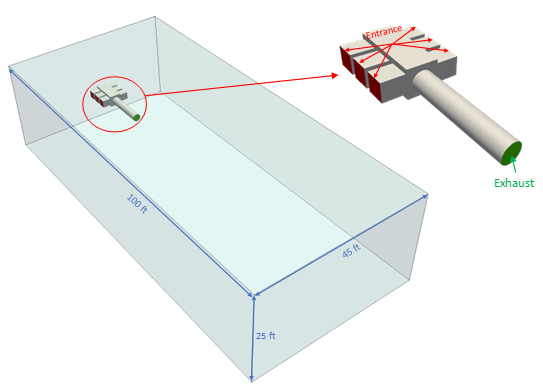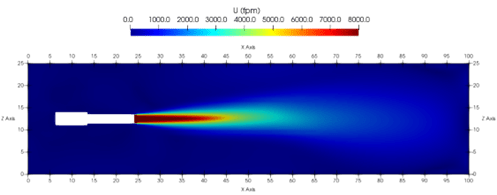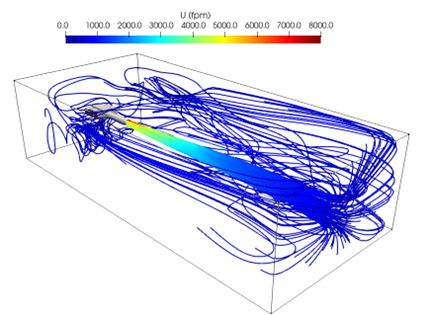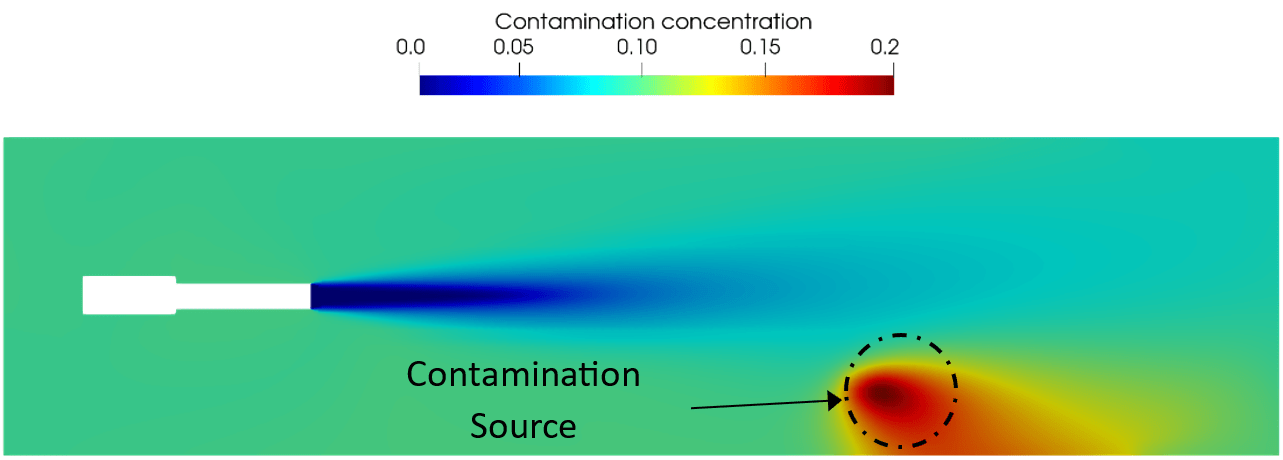Abstract
1. Introduction
Air pollution is a significant environmental and health concern that affects millions of people worldwide. According to the World Health Organization, ambient air pollution is responsible for an estimated 4.2 million premature deaths annually due to heart disease, stroke, respiratory diseases, and cancers [3]. As urbanization and industrialization continue to accelerate, the need for effective air purification systems becomes increasingly crucial. Indoor air quality, in particular, has garnered significant attention due to the amount of time individuals spend indoors, whether at home, work, or in public spaces.
Air purifiers are essential devices that improve indoor air quality by removing contaminants such as dust, pollen, smoke, and microorganisms. Given the growing awareness of indoor air pollution and its health impacts, research on air purifiers is increasingly important. These devices effectively reduce pollutants like volatile organic compounds (VOCs), thereby lowering health risks such as respiratory diseases and allergies [4]. They are particularly beneficial for individuals with asthma and can reduce the transmission of airborne diseases by filtering out bacteria and viruses [5-6]. Therefore, ongoing research is crucial for developing efficient air purification technologies and understanding their public health impact. Studies on air purifiers also explore the effectiveness of filtration technologies like HEPA filters, activated carbon filters, and UV-C light. This research advances the design and functionality of air purifiers [7]. Additionally, it addresses the energy efficiency and sustainability of air purification systems, which is vital for reducing their carbon footprint [8]. As air pollution continues to rise due to climate change and urbanization, effective air purification solutions are increasingly important, highlighting the significance of research in this field.
The AF-3623VT air purifier is a state-of-the-art device designed to tackle a wide range of airborne pollutants, employing advanced filtration technologies to ensure clean and healthy air in various settings.
1.1 Significance of the Study
The validation of air purifier models is vital for several reasons. First, it ensures that the devices perform as expected in real-world conditions, providing consumers with confidence in their purchase decisions. Second, accurate models enable manufacturers to optimize design and performance, reducing costs and enhancing efficiency. Third, validated models can contribute to the development of industry standards and regulations, guiding the production of safe and effective air purification systems.
In recent years, computational fluid dynamics (CFD) modeling has emerged as a powerful tool for analyzing the performance of air purifiers [5]. By simulating the airflow and contaminant distribution within a given space, CFD models offer insights into the effectiveness of air purification devices under various conditions. However, the accuracy of these models must be rigorously validated against experimental data to ensure their reliability.
1.2 Overview of AirDummies Software
AirDummies software is a specialized CFD tool developed to model and simulate air indoor airflow. It provides a user-friendly interface and a comprehensive suite of features for analyzing airflow, particle dispersion, and filtration efficiency. The software’s robust algorithms and high-resolution modeling capabilities make it an ideal choice for studying the performance of air purifiers like the AF-3623VT.
1.3 Validation Approach
This study aims to validate the modeling results of the AF-3623VT air purifier using AirDummies software against experimental data provided by Tanis Technologies and NASA. The validation process involves comparing the simulated results with empirical data on air jets, a well-established benchmark for evaluating airflow models. The NASA data, in particular, offers a rigorous standard for validating the centerline velocity of air jets, ensuring that the model accurately captures the behavior of airflow and contaminants in a controlled environment.
1.4 Importance in the Field
The validation of the AF-3623VT model is not only significant for the product itself but also contributes to the broader field of air purification technology. As the demand for efficient and reliable air purifiers grows, the need for validated models becomes increasingly critical. Accurate models support the design of innovative solutions, allowing manufacturers to explore new technologies and configurations that enhance air quality. Furthermore, the insights gained from this study can inform future research and development efforts, paving the way for more effective air purification systems.
1.5 Research Objectives
The primary objective of this research is to validate the AF-3623VT model using AirDummies software by comparing its predictions with experimental data from Tanis Technologies and NASA. This validation process will involve:
- Modeling the AF-3623VT air purifier within a specified room geometry to simulate real-world conditions.
- Analyzing the centerline velocity to assess the model’s accuracy.
- Demonstrating the air purifier’s performance with a single contamination source to evaluate its effectiveness in various scenarios.
1.6 Structure of the Paper
The remainder of this paper is organized as follows: Section 2 describes the methodology used in the study, including the details of the room and air purifier geometry. Section 3 presents the results of the validation process, highlighting the agreement between the model and experimental data. Section 4 discusses the air purification performance of the AF-3623VT, providing insights into its efficiency and effectiveness. Finally, Section 5 concludes the paper with a summary of the findings and recommendations for future research.
2. Methodology
2.1 Room and Air Purifier Geometry
To simulate the performance of the AF-3623VT air purifier, a 3D model of the room was created using AirDummies software. The room dimensions were set to 100 ft by 45 ft, with a ceiling height of 25 ft, to reflect typical commercial or industrial settings (see Figure 1). The air purifier was placed 11 ft above the floor to maximize coverage and minimize wall effects on airflow. The choice of room dimensions and positioning is critical to accurately representing real-world conditions.
The air purifier’s geometry, including its exit diameter and internal components, was modeled based on technical specifications provided by the manufacturer. The x-axis of the room was aligned with the end of the round exhaust. This setup allows for a detailed analysis of the air purifier’s impact on airflow and contaminant distribution.

Figure 1: Room geometry and air purifier setup.
.

Figure 2: 2D view of the room.
2.2 Model Parameters
Key parameters for the model were determined based on experimental data and technical specifications. Table 1 summarizes the critical parameters used in the simulation.
Table 2: Parameters used in the simulation.
| Parameter | Value |
| Air purifier Exit Diameter (D) | 2 ft |
| Flow rate | 25133 cfm |
| Mean exit velocity (Ujet) | 8000 fpm |
2.3 Computational Fluid Dynamics (CFD) Modeling
The CFD modeling was performed using the AirDummies software, which employs the Navier-Stokes equations to simulate fluid flow and particle dispersion. The software’s capabilities allow for high-resolution simulations of airflow patterns and contaminant distribution.
The simulation was set up with boundary conditions representing typical indoor environments, including wall, floor, and ceiling interactions. Turbulence models were selected to accurately capture the complex flow dynamics within the room, particularly around the air purifier.
Mesh generation was a critical step in the modeling process. A fine mesh was used in areas near the air purifier to ensure detailed analysis of the airflow and filtration effects. The mesh density was adjusted based on convergence studies to balance computational efficiency with accuracy.
2.4 Validation Data
Experimental data for validation was sourced from Tanis Technologies and NASA. The NASA data on air jets served as a benchmark for evaluating the accuracy of the airflow model. This data included measurements of centerline velocity and airflow patterns, which were used to compare against the simulation results.
Tanis Technologies provided data specific to the AF-3623VT air purifier, including performance metrics and empirical tests conducted in controlled environments. These datasets were crucial for assessing the model’s ability to replicate real-world performance.
2.5 Data Analysis
The simulation results were analyzed by comparing the modeled centerline velocity with the experimental data. The analysis included visual and numerical comparisons of airflow patterns and contaminant concentration distributions, providing qualitative insights into the model’s performance.
3. Results
3.1 Centerline Velocity Distribution Validation
The first phase of validation focused on comparing the centerline velocity values of the air jet stream as predicted by the model with the experimental data. Figures 3a and 3b display the velocity distribution results against NASA and Tanis Technologies data, respectively.
a) Centerline normalized velocity distribution against NASA data.
b) Centerline velocity distribution against Tanis Technology data.
Figure 3: Velocity distribution validation against experimental data from a) NASA[2] b) Tanis Technology.
The results showed a high degree of alignment between the modeled and experimental data. Furthermore, the velocity distribution is shown in Figure 4a and Figure 4b in the format of a contour and streamline, respectively.

a) Velocity contour shown from the side (vertical axis aligned with room walls).

b) Streamline colored by velocity magnitude.
Figure 4: Demonstration of the velocity distribution a) contour b) streamline.
3.2 Contaminant Dispersion/ Air Purification Performance
This section presents a demonstration of the performance of the air purifier with a 90% filtration rate and a single contamination source in the room. Figures 5a and 5b illustrate the contaminant concentration distribution as contours and streamlines, respectively.

a) Contamination concentration contour shown from the side (vertical axis aligned with room walls)

b) Streamline colored by contamination concentration
Figure 5: Demonstration of the contamination concentration a) contour b) streamline
ِ4. Discussion
4.1 Implications for Air Purification Design
The validation of the AF-3623VT model highlights several critical implications for the design and optimization of air purification systems. The ability to accurately simulate the airflow and contaminant dispersion enables manufacturers to explore innovative designs and configurations that enhance purification efficiency.
4.1.1 Cost Optimization
Cost optimization involves both capital and operational expenses. AirDummies can assist in identifying the optimal system configuration, including the ideal number and placement of air purifiers to minimize capital costs. Additionally, by optimizing airflow patterns and reducing pressure losses, manufacturers can design more energy-efficient systems without compromising performance. The validated model serves as a foundation for exploring these optimization strategies.
4.1.2 Performance Optimization
Accurately modeling the system with AirDummies can also contribute to achieving better indoor air quality, ensuring the safety of occupants. This includes optimizing the placement, selecting the appropriate model, and determining the optimal airflow rate of the air purifiers.
4.1.3 Smart Air Purification Systems
The integration of smart technologies, such as sensors and IoT connectivity, offers opportunities for enhancing air purification performance. Real-time monitoring and adaptive control systems can optimize the operation of air purifiers based on environmental conditions and user preferences.
4.2 Limitations and Future Work
While this study demonstrates the model’s accuracy, an important limitation must be acknowledged. The validation was primarily focused on a single-room geometry and velocity distribution without considering contamination sources. Future research should explore the model’s applicability to a wider range of environments that include contamination sources.
4.3 Environmental and Health Implications
The findings of this study underscore the importance of effective air purification in safeguarding public health. By reducing indoor air pollution, air purifiers contribute to healthier living and working environments, reducing the risk of respiratory diseases and other health issues. Moreover, the study highlights the potential for air purification systems to contribute to environmental sustainability by reducing energy consumption and optimizing resource use. As awareness of indoor air quality grows, the demand for efficient and reliable air purifiers is likely to increase, driving innovation and adoption in the field.
5. Conclusion
The validation of the AF-3623VT air purifier model using AirDummies software demonstrates the reliability and accuracy of AirDummies in CFD modeling for predicting air purification performance. The study highlights the strong alignment between the modeled and experimental data, confirming the model’s applicability for analyzing airflow dynamics.
The insights gained from this research have significant implications for the design and optimization of air purification systems, offering opportunities to enhance system cost-effectiveness, energy efficiency, indoor air quality, and smart integration. As the demand for effective air purifiers continues to grow, validated models like the one presented in this study will play a crucial role in advancing the field and improving indoor air quality.
Future research could explore the model’s applicability to diverse environments and contamination sources. By continuing to advance the understanding of air purification dynamics, this research contributes to the development of innovative solutions that promote healthier and more sustainable living environments.
6. References
[1] “Tanis Technologies – Air Quality, Oil Mist Collection.” Accessed: Aug. 17, 2024. [Online]. Available: https://tanistechnologies.com/
[2] NASA, “Axisymmetric Subsonic Jet Validation – SA Model Results.” Accessed: Aug. 17, 2024. [Online]. Available: https://turbmodels.larc.nasa.gov/jetsubsonic_val_sa.html
[3] World Health Organization, “Ambient (outdoor) air pollution.” Accessed: Aug. 17, 2024. [Online]. Available: https://www.who.int/news-room/fact-sheets/detail/ambient-(outdoor)-air-quality-and-health
[4] J. Douwes, P. Thorne, N. Pearce, and D. Heederik, “Bioaerosol health effects and exposure assessment: progress and prospects,” Ann Occup Hyg, vol. 47, no. 3, pp. 187–200, Apr. 2003, doi: 10.1093/ANNHYG/MEG032.
[5] J. L. Sublett, “Effectiveness of air filters and air cleaners in allergic respiratory diseases: a review of the recent literature,” Curr Allergy Asthma Rep, vol. 11, no. 5, pp. 395–402, Oct. 2011, doi: 10.1007/S11882-011-0208-5.
[6] V. Offeddu, C. F. Yung, M. S. F. Low, and C. C. Tam, “Effectiveness of Masks and Respirators Against Respiratory Infections in Healthcare Workers: A Systematic Review and Meta-Analysis,” Clinical Infectious Diseases, vol. 65, no. 11, pp. 1934–1942, Nov. 2017, doi: 10.1093/CID/CIX681.
[7] M. S. Waring, J. A. Siegel, and R. L. Corsi, “Ultrafine particle removal and generation by portable air cleaners,” Atmos Environ, vol. 42, no. 20, pp. 5003–5014, Jun. 2008, doi: 10.1016/J.ATMOSENV.2008.02.011.
[8] W. J. Fisk, “Health benefits of particle filtration,” Indoor Air, vol. 23, no. 5, pp. 357–368, Oct. 2013, doi: 10.1111/INA.12036.
Here is downloadable file: AF-3623VT air purifier validation
